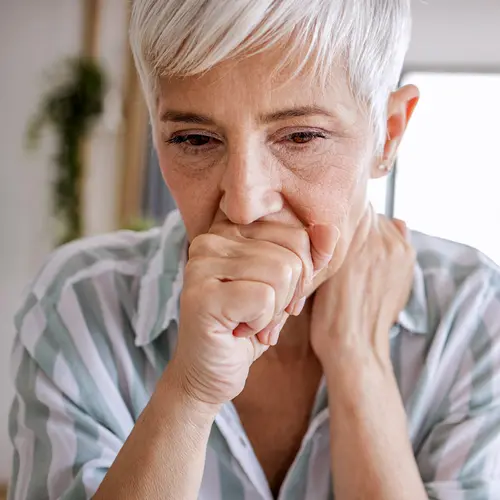Sometimes, lung cancer comes back after you’ve had treatment. This is called a recurrence.
It can happen at any time or not at all. But lung cancer is most likely to return within 5 years after you were diagnosed.
Types of Recurrence
After treatment, some tiny cancer cells may stay in your body. Over time, these cells may divide and grow into a cancer again.
Your lung cancer may come back in your lungs. Or it may return in a different part of your body. There are three types of cancer recurrence:
- Local: The cancer has come back to your lungs.
- Regional: The cancer is in the lymph nodes near the lungs.
- Distant: The cancer is in another part of the body, like the liver, bone, or brain. Even though it’s in a different area, it’s still called a lung cancer recurrence.
Signs of Recurrence
The symptoms of a lung cancer recurrence depend on where it comes back. If it’s in your lungs, you may have:
- A cough that doesn’t go away
- Chest pain
- Shortness of breath
- Lung infections, like bronchitis and pneumonia
- Blood coming up when you cough
Other general signs of cancer include:
- Pain, such as headaches and back pain
- Fatigue
- Skin issues, like a yellowish tint and itchiness
- Fever
- Unexplained weight loss
If you have one or more of these symptoms for a while or they get worse, talk to your doctor. You may also not have any signs of disease at all. That’s why it’s important go to your follow-up appointments. Your doctor will do an exam and may order tests to check for a lung cancer recurrence.
Get immediate medical help if you have sudden or serious symptoms, such as high fever, severe pain, or a hard time catching your breath.
Chances of Recurrence
Your chances depend on what type of lung cancer you have and its stage. The kind of treatment you’ve had may also play a role.
There are two types of lung cancer: Non-small-cell lung cancer (NSCLC) is the most common, accounting for roughly 85% of cases. The other kind is small-cell lung cancer (SCLC).
If you have NSCLC, your chance of a recurrence depends on what stage you have. Your doctor will tell you your stage from 0 to IV. In general, the higher your stage, the more your cancer has spread, and the greater chance it’ll come back. For example, research shows that one in three people with stage I will have a recurrence. For those diagnosed with stage III, the lung cancer will return about 63% of the time.
SCLC is the most aggressive kind of lung cancer. Although SCLC responds well to treatment at first, most people will have a recurrence in a year or two. When SCLC comes back, it tends to spread faster.
There are two stages:
- In the limited stage, the cancer is on one side of your chest.
- If the cancer has spread to both lungs, lymph nodes, or to other parts of your body, that’s called the extensive stage.
Treatment
Your doctors may recommend a different treatment for your cancer recurrence than what you did the first time. They will decide based on:
- Where it came back
- Treatments you’ve already gotten
- Any genetic changes in the cancer
- Your overall health
Your doctor may prescribe one or more of these treatments. The goal may be to cure the cancer, slow its growth, or ease any symptoms.
- Chemotherapy:These strong drugs kill cancer cells throughout the body. A lot of the time, chemotherapy doesn’t work as well the second time around. Your doctor may prescribe a different chemotherapy drug or a combination of them.
- Targeted therapy: These medicines block certain molecules involved in cancer growth, spread, or progress.
- Immunotherapy: If chemotherapy or targeted therapy doesn’t work, your doctor may try immunotherapy. These drugs help your immune system fight cancer.
- Radiation therapy:High doses of radiation, such as X-rays, kill cancer cells or keep them from growing. This therapy can treat lung cancer that has spread to the bones or brain. It’s also used to relieve cancer symptoms.
- Surgery: A surgeon may remove the cancer in your lungs, lymph nodes, adrenal glands, brain, or liver.
- Endobronchial therapies: In some cases, a tumor can block an airway in your lungs. This can lead to breathing issues, like coughing and pain. You may need a treatment to clear things up. You could have laser therapy, which uses a laser to kill cancer cells. Another option is putting in a stent, a device that helps keep your airways open.

